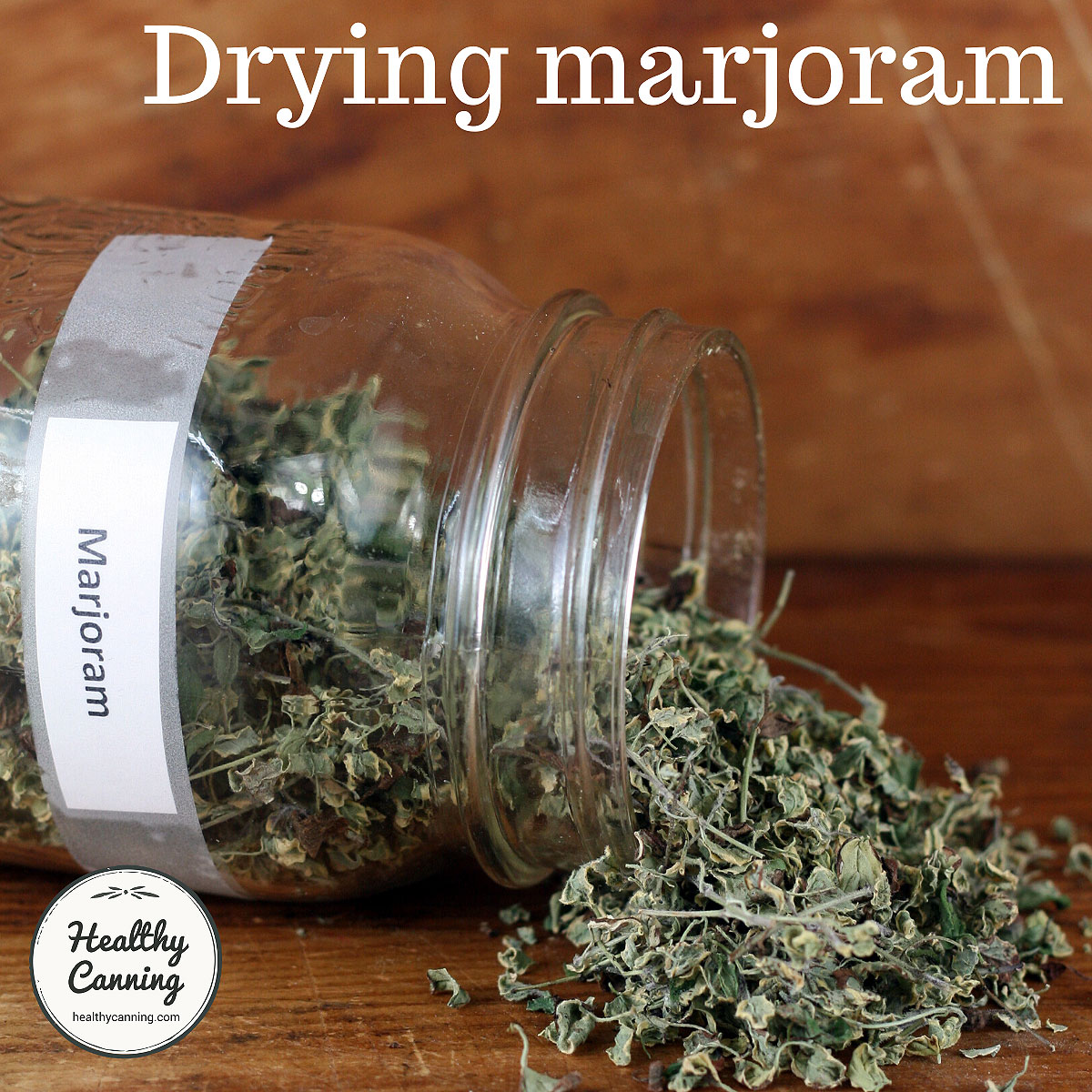
Dried marjoram
Marjoram is an easy herb to grow and dry. Home drying marjoram with a dehydrator can produce a high-quality dried product that is infinitely better than the store-bought version for flavour and aroma.
Growing enough to marjoram to dry
Grow at least half-a-dozen marjoram plants at a time, if possible. The reason is to give yourself enough of a marjoram harvest at a time to make it worthwhile firing up the dehydrator: it’s just not worth turning a dehydrator on for a handful of leaves.
Harvest marjoram just before it flowers. Cut stalks off up to 15 cm (6 inches) below where the flower buds are appearing. Depending where you live and your growing conditions, you may be able to get a few harvests from it.
Drying marjoram in a food dehydrator is superior to hanging it to dry, because the faster drying can lock in the flavour and colour better.
Yields and Equivalents
To come
Directions
Preparation: Discard fading or brown leaves. Wash leaves, then dry thoroughly. If you have a salad spinner, spin the leaves until very dry. (You can store the prepared leaves in a sealed plastic bag in the fridge for a few days before drying.) Spread the leaves over the dehydrator trays.
Blanching: None.
Temperature: 95 F / 35 C
Time: Until crisp and crumbly — 2 to 4 hours, depending on humidity of the air.
Reference: Excalibur. Preserve it naturally. 4th edition, 2012. Page 81.
Air-drying marjoram
“The easiest way to air dry sturdy herbs [such as marjoram] is to tie the washed branches into small bundles (5-6 stems) and hang them upside down, in a warm (21 to 70-80°F), dry, well-ventilated area out of direct sunlight. Finding the right spot is sometimes difficult: basements are usually too damp; garages have car fumes. Attics or linen closets are often a good choice. Just make sure there is good air circulation so the herbs don’t get moldy.
Let them hang until the moisture evaporates (generally 2-4 weeks). Herbs can be air-dried outdoors, but better color and flavor retention usually results from drying indoors (especially in the humid Midwest). The bunches can be placed in a paper bag, with holes cut in the sides for air circulation, to protect them from dust the bag and to catch any leaves or seeds that fall off. Gather the bag around the stems and tie. Make sure there is plenty of room inside the bag so leaves do not touch the sides of the bag.” [1]Mahr, Susan. Drying Herbs. Master Gardener Program, University of Wisconsin-Madison. 3 September 2012. Accessed April 2020 at https://wimastergardener.org/article/drying-herbs/
Notes
The Excalibur manual says “do not wash”. But as there are emerging studies on listeria, salmonella and other nasties surviving on unwashed dried herbs, we recommend the washing step to reduce the bacterial load.
Storage
Let the dehydrated product cool completely to room temperature before packing it into storage containers.
Watch the sealed containers for the first few days for any sign of condensation. If condensation occurs, dehydrate a bit more.
Label jar with name of product and date. Store away from heat and direct light.
Usage notes
There is no need to rehydrate dried marjoram before use.

Variegated marjoram on tray reading for drying
References

Leave a Reply